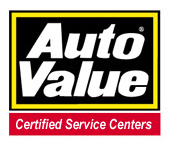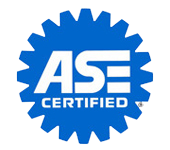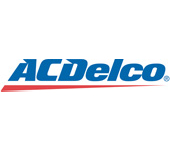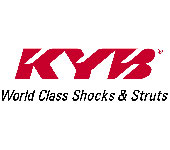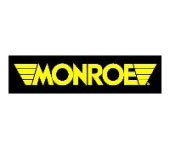
Archive for February 2025Beware Dangers of Spring Driving (Seasonal Driving Tips)Posted February 23, 2025 3:15 AMSure, winter is quickly fading in the rearview mirror, but the peril of icy roads is replaced with a whole new set of driving challenges in spring. Deer and other wildlife. You are not the only one who gets spring fever. Animals do, too, and spring is the time they start looking for mates and food. Be extra careful at dawn and dusk when deer are especially active. Hitting a deer (or having them jump into your path suddenly) is a frightening experience, and even a deer/vehicle collision at slow speeds can cause injury and/or loss of life for both animal and humans, let alone expensive damage to the vehicle. Be extra vigilant during spring. The angle of the light. As the seasons progress, you'll notice sun angles change. The sun is rising earlier every morning and setting later at light. When the sun is low in the sky, that glare can render you almost completely blind. Make sure your windows and windshield are clean; don't forget the inside glass, too, which can build up a haze over the winter. Potholes. The freezing and thawing of pavement is shockingly effective at busting up asphalt and concrete. The holes left behind can seem like moon craters, and if you hit one or more hard, they can cause you to lose control of your vehicle, increasing your chances of an accident. They also can cause some significant damage to your vehicle. If you feel your vehicle pulling to one side, notice it has a rough ride or hear noises you haven’t heard before, have your suspension's integrity inspected at your vehicle service facility. Children playing. Kids are excited to get back outside, running wild, playing with balls and toys… just being kids. These newly-rediscovered outside thrills can also steal away their attention from what's going on around them and they may dart out onto the street before you know it. Spring is a time to be vigilant and devote extra concentration to roads and neighborhoods. Spring is such a breath of fresh air. Remember to be super careful of a whole new set of hazards winter made you forget about for a while.
Steering You Right (Power Steering Fluid Service)Posted February 16, 2025 3:14 AMIt’s important for safe driving that two of the most important systems in your vehicle work right. One is the brakes. The other is the steering. Nearly all vehicles on the road have some sort of power steering that allows you to direct a very heavy machine with little effort. There are two types, hydraulic and electric. Many newer vehicles have electric power steering that uses an electric motor to make your steering easier. But there are many vehicles on the road that use a system that has been around for years. It uses a power steering pump, a cylinder, several valves, and hydraulic fluid to make it easy for you to turn the wheel. If you have hydraulic power steering in your vehicle, it’s important to change your power steering fluid every once in a while. Over time, the fluid gets contaminated with dirt and other particles. You might notice your steering is loose, maybe harder to turn and makes a low, straining noise. The first step in determining hydraulic power steering problems is to have your fluid checked. Its color and smell can give a technician clues to any problems. They will recommend changing it if it has signs of being old, such as the wrong color or smell. Because steering is such a vital safety feature in your vehicle, the best strategy is to maintain your power steering according to the vehicle manufacturer’s recommendations. That means periodically, the fluid should be changed. That will prolong the life of the other steering systems components, such as hoses, seals, valves, and the power steering pump. During this service, the technician will replace the fluid, bleed the system and check for leaks. You’ll be back on the road knowing your vehicle is in top shape to steer you right. Brake World Oil's Well That Ends Well (Oil Change Grades and Weight)Posted February 9, 2025 3:12 AMChanging your oil regularly is one of the most important things you can do to keep your vehicle running well. And knowing the right type of oil to use is also very important. Engine oil is classified by weight, but it doesn't refer to how much the oil would weigh if you put it on a scale. It refers to viscosity, or how easily the oil flows through the engine. Most engines operate normally at around 210°F/99°C. The viscosity, or weight, is assigned a number by how well it flows at that temperature. The lower the number, the more freely it flows. Most vehicle engines use what's called a multigrade oil which behaves differently in different temperatures. Multigrade oils have a "W" in their viscosity number that you may have seen on a bottle of oil, something like 5W30. The W stands for winter and shows how freely it flows in colder temperatures. That means a 5W30 oil will behave like a 5 weight oil in lower temperatures (less viscous or thinner) and a 30 weight oil in warmer temperatures (more viscous or thicker). That's important on a cold day because the oil needs to behave like a thinner oil when you start your engine since it need to lubricate engine components immediately to protect the metal components. Then as the engine warms up, it behaves like a thicker oil to prevent friction among those parts. Pretty neat trick, right? The type of oil you use can differ depending on what type of climate you operate your vehicle in and how your vehicle is used (carrying big loads, towing, etc.). Your owner's manual contains several different recommendations based on these factors. Your service advisor can recommend the right oil for your needs. Like Shakespeare said, "Oil's well that ends well." Brake World Alleviate the Creaks and Squeaks (Chassis Lubrication)Posted February 2, 2025 3:12 AMIf your vehicle creaks and squeaks when you drive down the road, it may mean that some of the metal parts are rubbing against each other and need to be lubricated. Those could be parts of the suspension, steering system and the drivetrain. Years ago, most vehicles had to have their chassis (what you think of as the frame) regularly lubricated. Newer vehicles are made with what some call "lifetime lubrication," but there are still parts of the chassis that need to be maintained with lubricants. Your service advisor can help you know when that needs to be done. In your owner's manual, the vehicle's manufacturer lists components that need regular maintenance. Things like u-joints, steering joints, sway bars, bushings and joints in the suspension. Some of them may have that "lifetime lubrication," while others may not. When you bring your vehicle in for service, a technician will look for any parts that have grease fittings. They will inspect these components, clean the fittings so dirt and other contaminants won't be forced into the part and then lubricate them with a lubricant that meets the manufacturer's specifications. Sometimes a chassis lubrication is done at the same time as an oil change. That's also an ideal time for the technician to check other parts of your vehicle that may need attention. That could include greasing other parts such as the fuel door, trunk and door hinges, suspension springs and door latches. Times have changed since the days when a "lube" job was synonymous with an oil change. Depend on your owner's manual and advice from your service advisor to know when "grease" is the word—and appropriate for your vehicle. Brake World | ||
SearchArchiveNovember 2018 (16)December 2018 (5) January 2019 (5) February 2019 (4) March 2019 (5) April 2019 (4) May 2019 (4) June 2019 (5) July 2019 (4) August 2019 (4) September 2019 (5) October 2019 (4) November 2019 (4) December 2019 (5) January 2020 (5) February 2020 (4) March 2020 (5) April 2020 (4) May 2020 (5) June 2020 (4) July 2020 (4) August 2020 (5) September 2020 (4) October 2020 (4) November 2020 (5) December 2020 (4) January 2021 (6) February 2021 (4) March 2021 (4) April 2021 (4) May 2021 (5) June 2021 (4) July 2021 (4) August 2021 (5) September 2021 (4) October 2021 (5) November 2021 (4) December 2021 (4) January 2022 (6) February 2022 (4) March 2022 (4) April 2022 (4) May 2022 (5) June 2022 (4) July 2022 (5) August 2022 (4) September 2022 (4) October 2022 (5) November 2022 (4) December 2022 (4) January 2023 (5) February 2023 (4) March 2023 (4) April 2023 (5) May 2023 (4) June 2023 (4) July 2023 (5) August 2023 (4) September 2023 (4) October 2023 (5) November 2023 (4) December 2023 (5) January 2024 (5) February 2024 (4) March 2024 (5) April 2024 (4) May 2024 (4) June 2024 (5) July 2024 (4) August 2024 (4) September 2024 (5) October 2024 (4) November 2024 (4) December 2024 (5) January 2025 (4) February 2025 (4) March 2025 (5) April 2025 (4) May 2025 (4) June 2025 (5) July 2025 (4) August 2025 (5) September 2025 (4) October 2025 (4) November 2025 (5) December 2025 (1) | CategoriesFuel Economy (6)Maintenance (8)Brakes (11)Tires and Wheels (2)Timing Belt (3)Fluids (5)Battery (10)Headlamps (4)Alternator (6)What Customers Should Know (49)Cooling System (6)Service Standards (3)Customer Detective Work (1)Check Engine Light (2)Service Intervals (1)Exhaust (4)Fuel Saving Tip: Slow Down (1)Suspension (1)Shocks & Struts (3)Alignment (4)Oil Change (5)Tires (9)Windshield Wipers (1)Safety (2)Air Conditioning (7)Automotive News (2)Older Vehicles (1)Drive Train (3)Wheel Bearings (1)Steering (5)Cabin Air Filter (1)Transmission (2)Tire Rotation and Balancing (3)TPMS (2)Brake Service (5)Auto Safety (2)Keys to a long lasting vehicle (1)Safe Driving (1)Shocks and Struts (2)Fuel System (2)Transfer Case Service (1)Dashboard (1)Inspection (2)Winter Prep (1)Battery Replacement (1)Differential Service (1)Water Pump (1) | |
What our clients are saying about us
We have established longterm and stable partnerships with various clients thanks to our excellence in solving their automotive needs!
Called the shop early Saturday Morning. I wanted an oil change and my tires rotated. I was told come in before noon. I did. I thought I would be there all day. But to my surprise it only took 40 minutes. They changed oil n filter, lubricant all grease fittings, tapped off fluids, checked tire pressure and rotated my tires. That was a great package deal 69.99. I will be back. Customer Service was great! No appointment necessary even on a Saturday.
I was able to come off the street and get an oil change without an appointment. Very impressed with the service and quick turn-around time. I will definitely come back for future oil changes.





